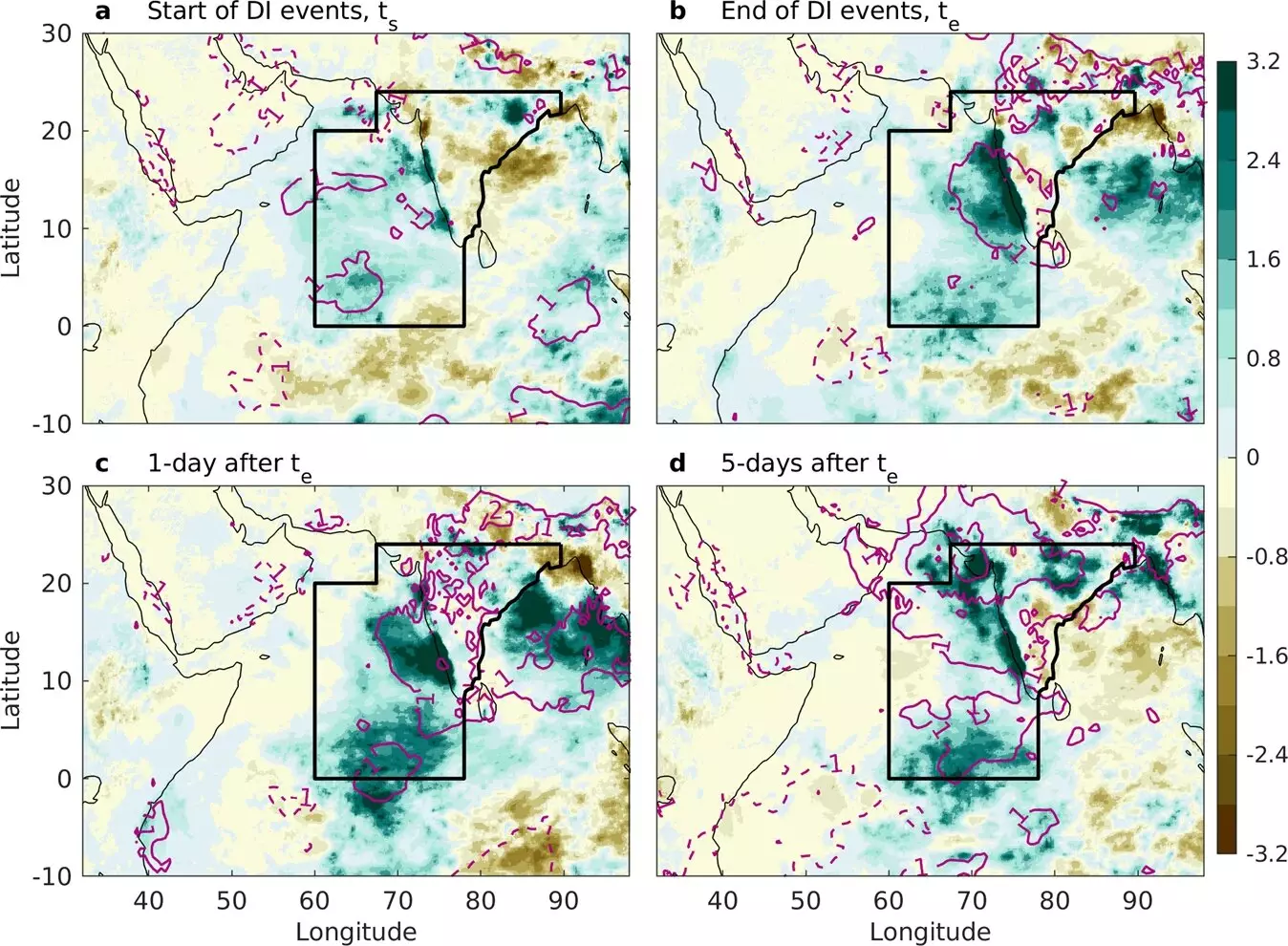In 2018, the Indian state of Kerala experienced a devastating flood that resulted in the loss of more than 400 lives and displaced millions of people. Flooding during the monsoon season is not uncommon in tropical Asia, but the ability to predict when these heavy rains will escalate into catastrophic flooding has always been a challenge. However, a recent study conducted by researchers at the Weizmann Institute of Science may provide new insights into this phenomenon. Dr. Shira Raveh-Rubin and Dr. Deepika Rai, from the institute’s Earth and Planetary Sciences Department, have discovered a surprising factor that precedes intense monsoon rainfall: the arrival of dry air. Their groundbreaking research, published in npj Climate and Atmospheric Science, offers the potential to significantly improve flood forecasting and save countless lives.
The monsoon rains that deluge the Indian subcontinent from July to September are complex and influenced by numerous factors, including shifting global jet streams. The Weizmann study identified an additional complicating factor: a specific type of airstream called a dry intrusion. Dry intrusions consist of cold, dry air that is significantly colder than the typically humid air associated with monsoon downpours. Common knowledge held that dry intrusions were responsible for short dry spells, or monsoon breaks, within the rainy season. However, the Weizmann researchers made a groundbreaking discovery when they found that dry intrusions were actually followed by an increase in rainfall of 17 percent, on average, and even more in some cases.
To delve deeper into this peculiar phenomenon, the researchers employed a mechanical physics model that tracked the temperature, location, and water content of moving air “packets.” Through this analysis, they observed an increase in total water and identified the cause behind it. Dry air from the intrusions over the Indian Ocean acted like a sponge, absorbing moisture from the ocean’s surface. The greater the moisture differential between the ocean and the dry air packets, the more water they absorbed. As a result, the moisture-laden packets were transported northward toward India’s west coast on the Arabian Sea. While previous studies using the same model focused on understanding rainfall patterns and monsoon breaks, they had not examined the behavior of dry intrusions crossing the equator, which turned out to be distinct from their overland counterparts.
The novelty of this research stems from the fact that the dynamics of dry intrusions occur on a much shorter timescale, ranging from days to weeks, compared to the longer-term mechanisms typically associated with monsoon dynamics. This aspect may have caused dry intrusions to be overlooked as a significant factor influencing monsoon rainfall patterns. Dr. Raveh-Rubin suggests that the slow rise in seawater surface temperatures and other long-term phenomena have overshadowed the immediate impact of dry intrusions. Nonetheless, she emphasizes that dry intrusions provide a tangible link between theoretical physics and real-life weather patterns.
The implications of this study extend beyond theoretical understanding. Dr. Raveh-Rubin believes that monitoring dry intrusions, a capability available today, could greatly enhance flood forecasting in flood-prone regions like India and Bangladesh, where millions of people inhabit low-lying areas. By accurately predicting specific peaks in rainfall, authorities could issue advance warnings about potential flooding up to a week in advance. This extended forecast window would allow for adequate preparation, evacuation efforts, and ultimately, the prevention of unnecessary loss of life. Dr. Raveh-Rubin and her team at the Weizmann Institute are committed to further investigating the effects of dry intrusions on monsoons and refining their model. They also intend to explore if similar patterns exist in other regions worldwide, with the goal of improving our ability to predict heavy rains and severe flooding globally.
The research conducted by Dr. Raveh-Rubin and Dr. Rai provides invaluable insights into the complexity of monsoon dynamics and the role dry intrusions play in predicting extreme rainfall events. With the potential to save lives and mitigate the devastating impact of flooding, this study marks a significant breakthrough in the field of meteorology. By deepening our understanding of how dry air can produce intense rainfall, we pave the way for improved forecasting and disaster preparedness in flood-prone regions around the world. Thanks to the diligent efforts of researchers like Dr. Raveh-Rubin and her team, we are one step closer to minimizing the destructive consequences of unpredictable monsoon flooding.


Leave a Reply